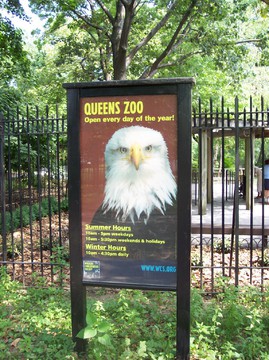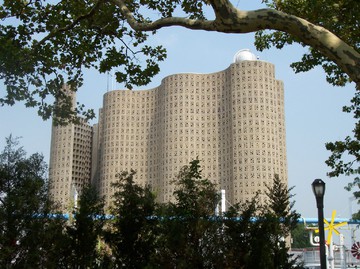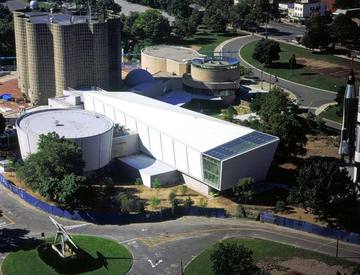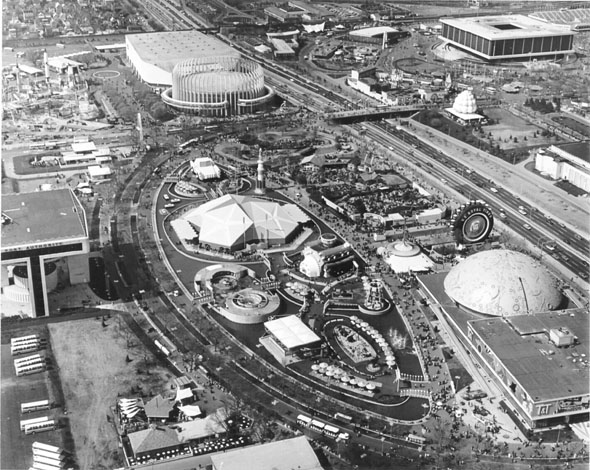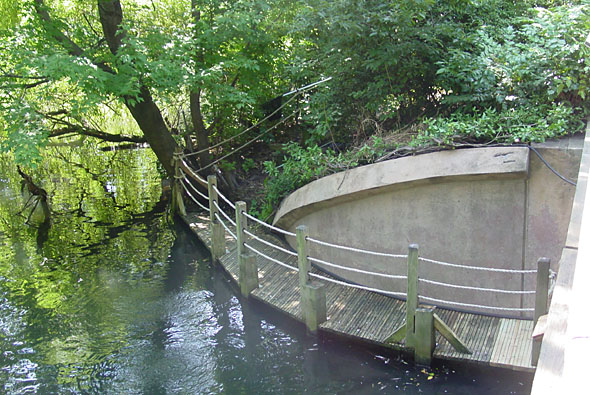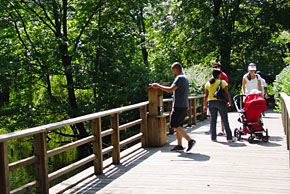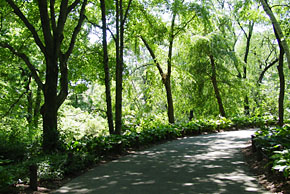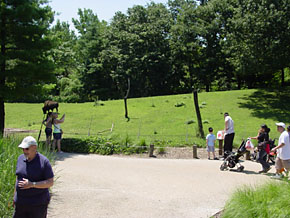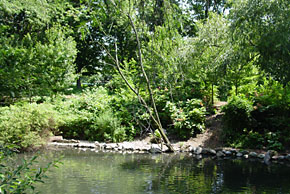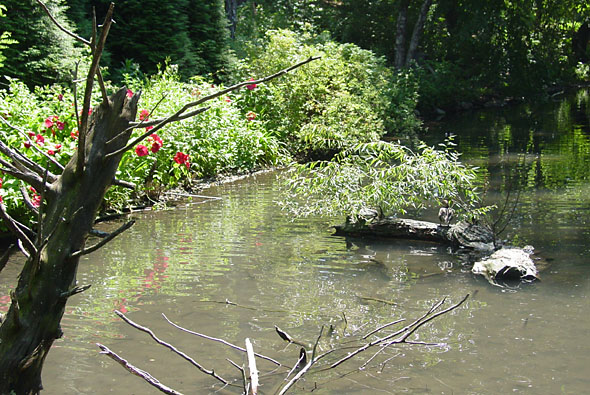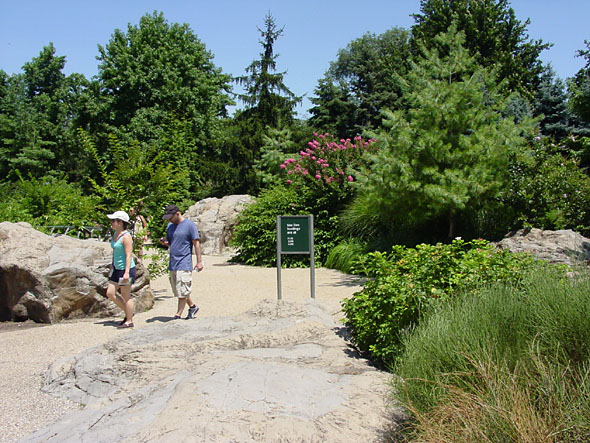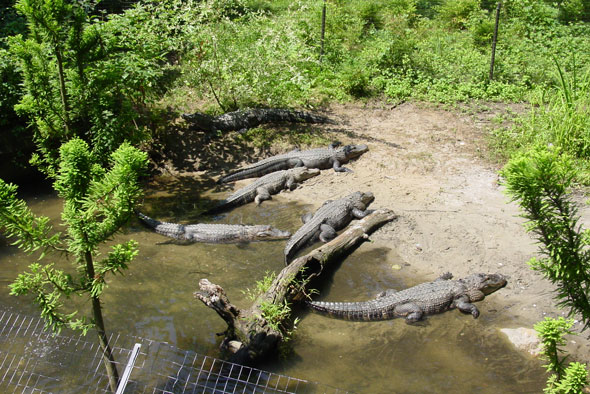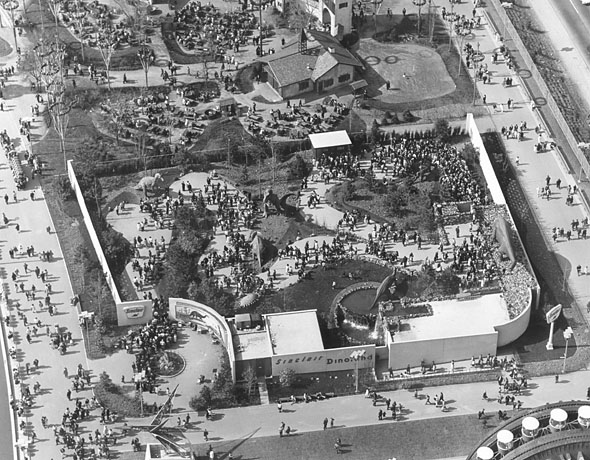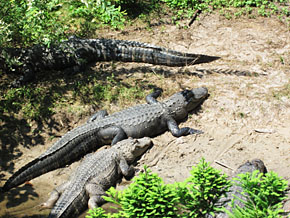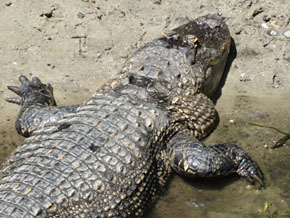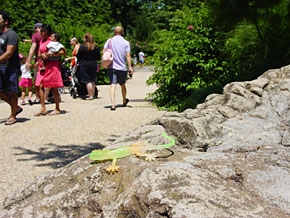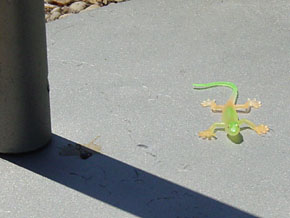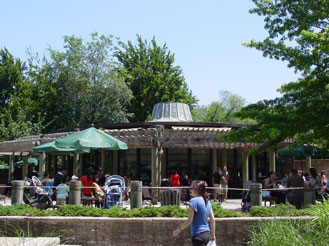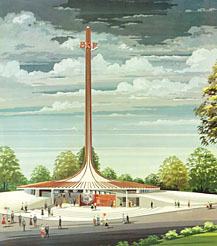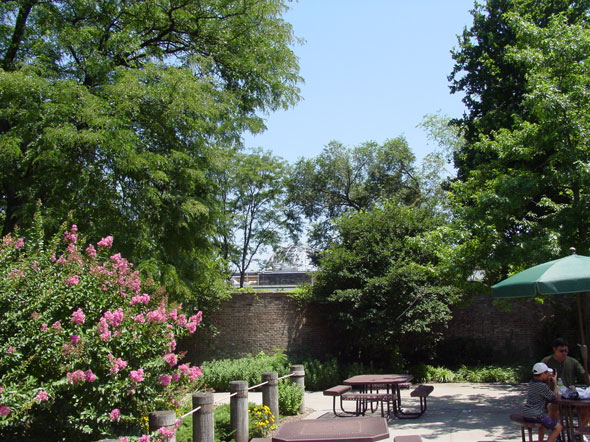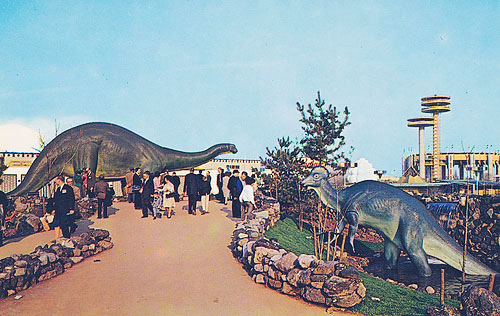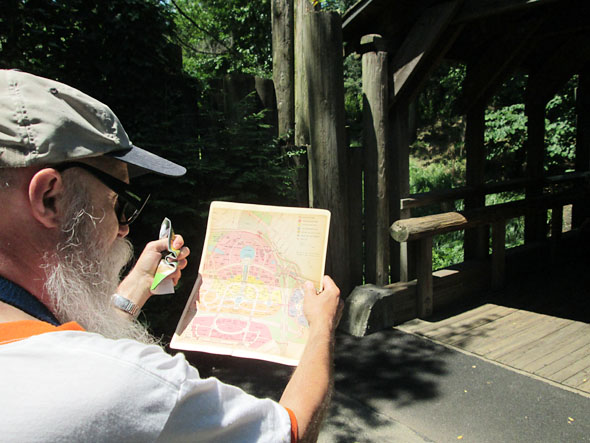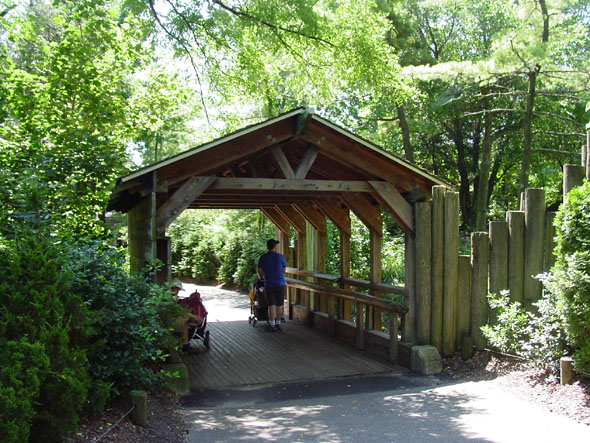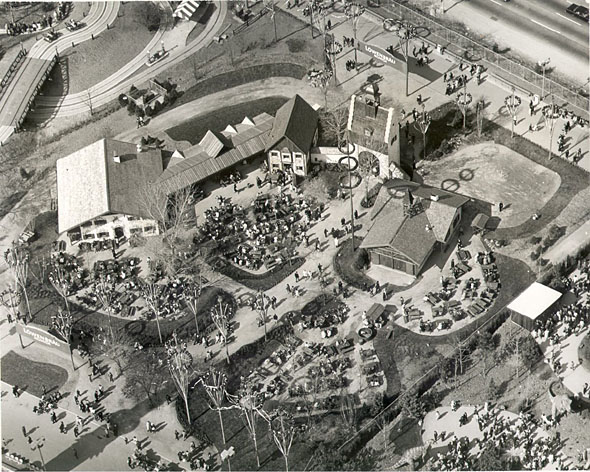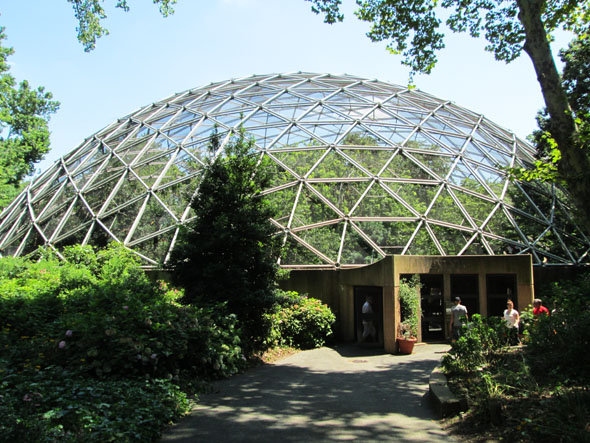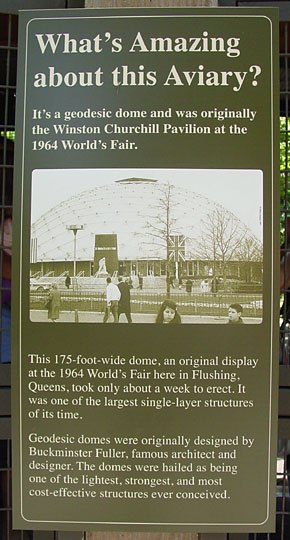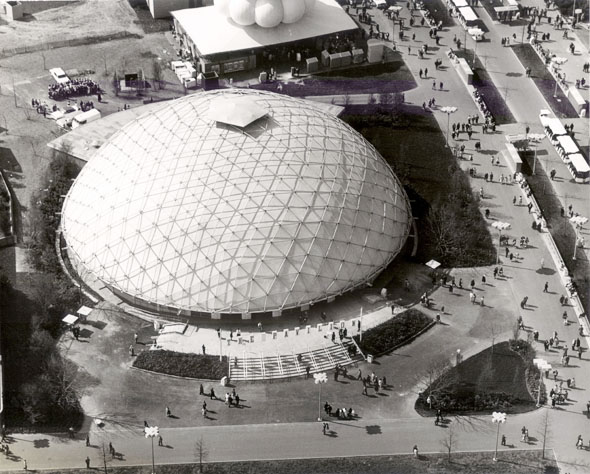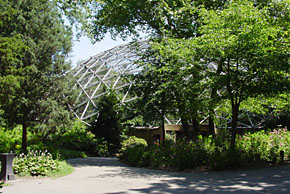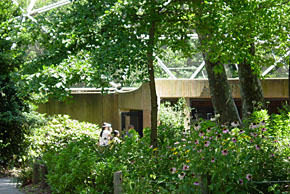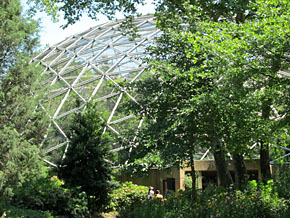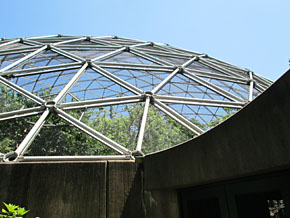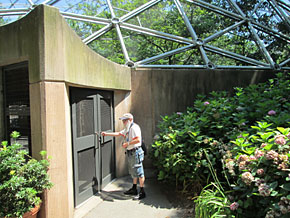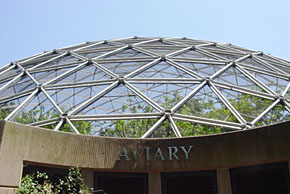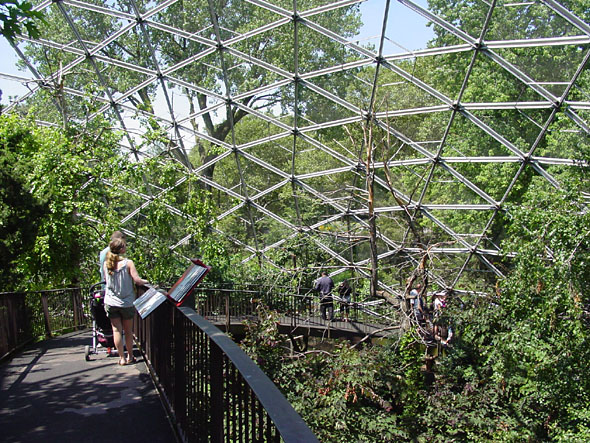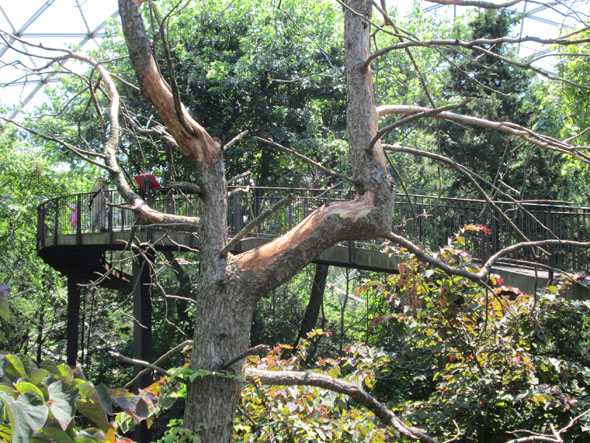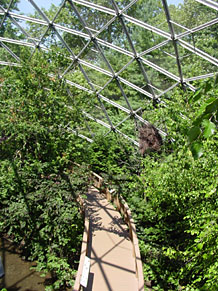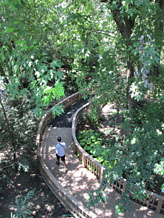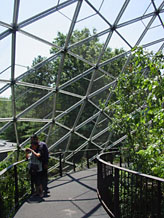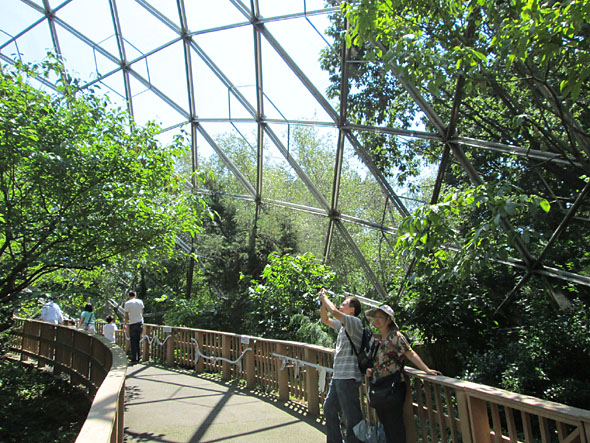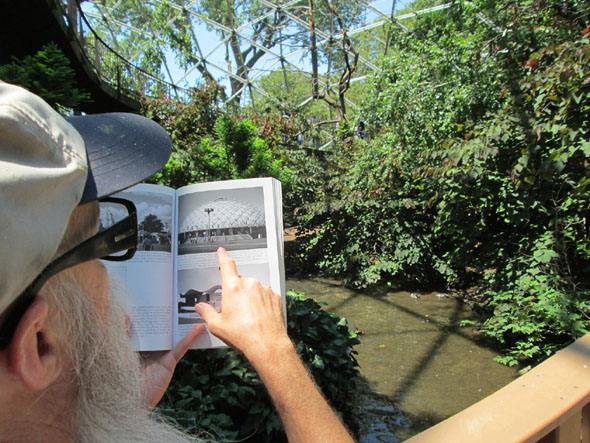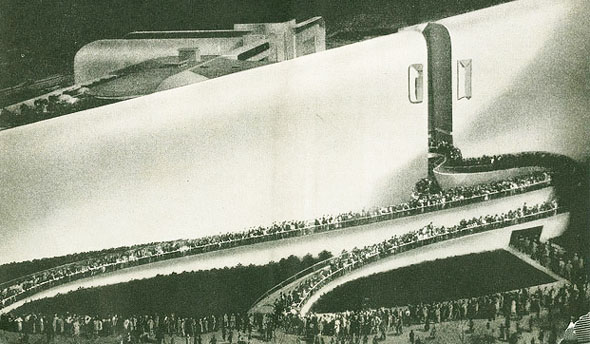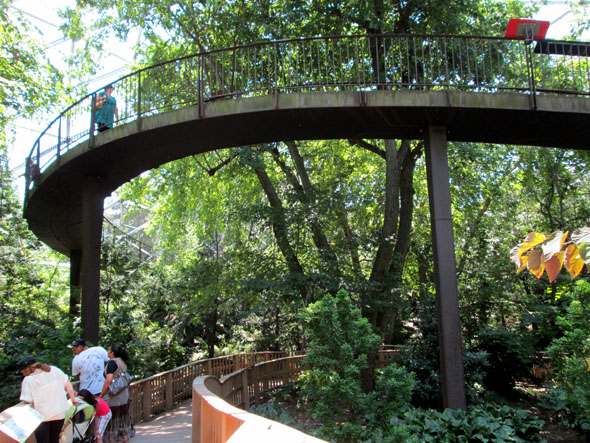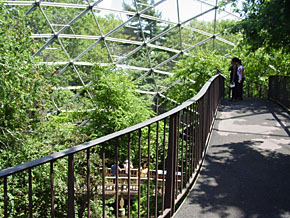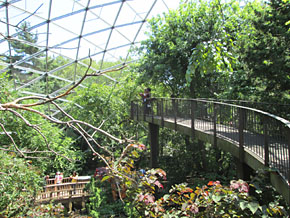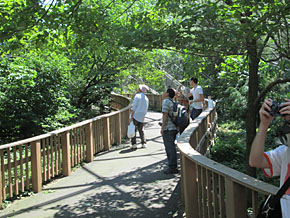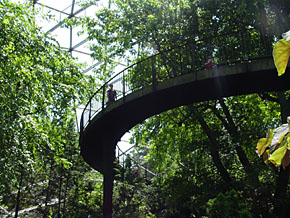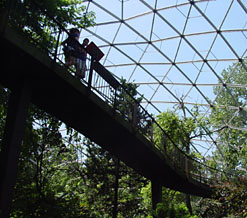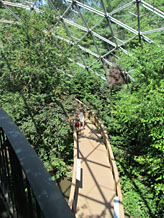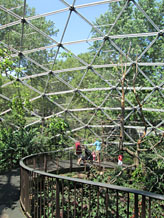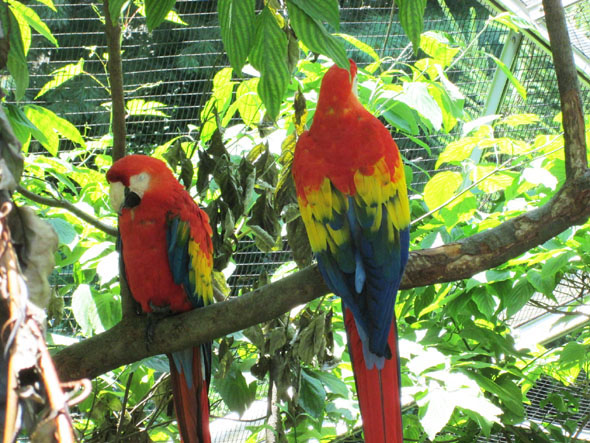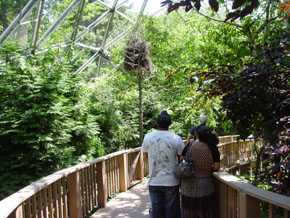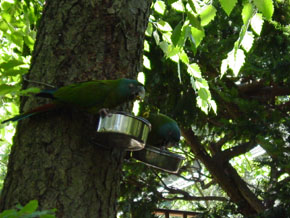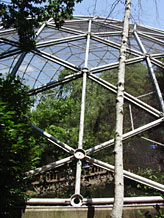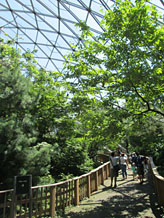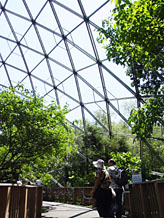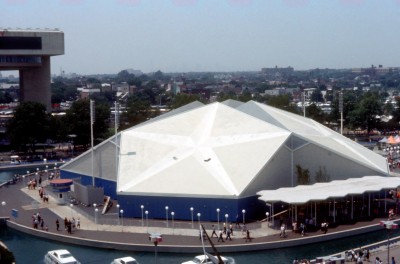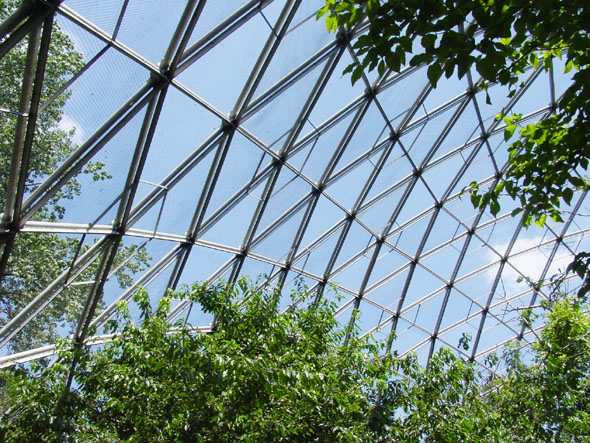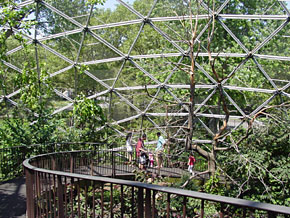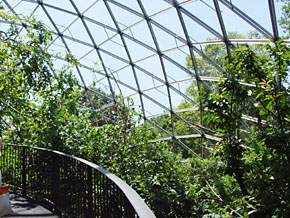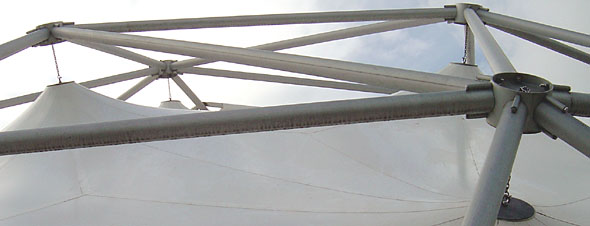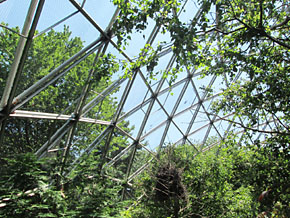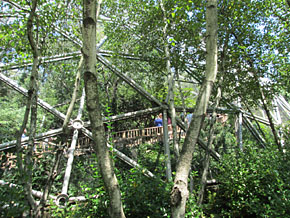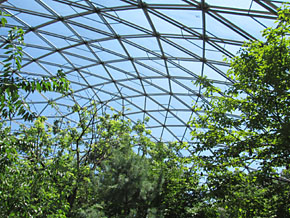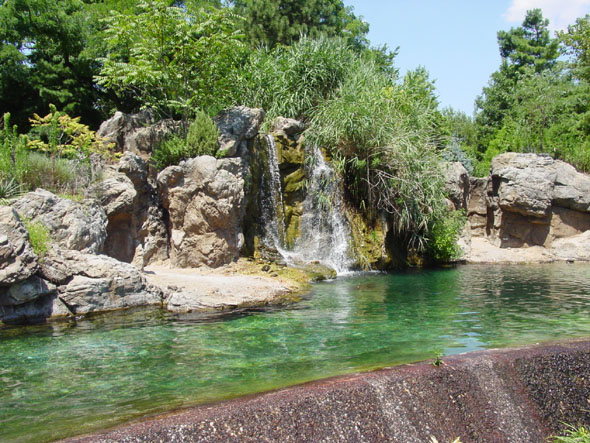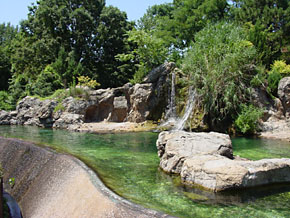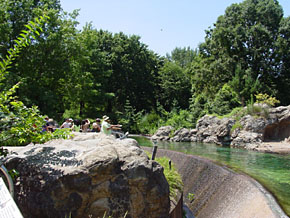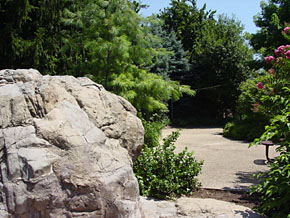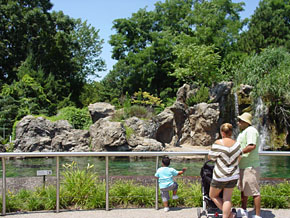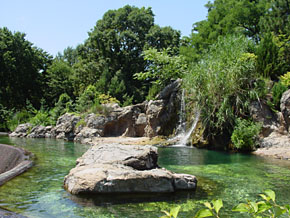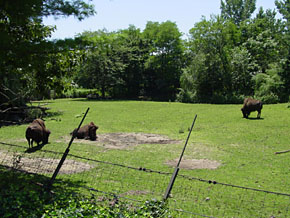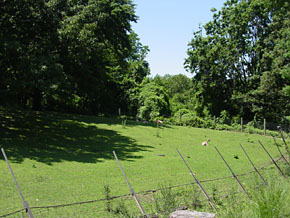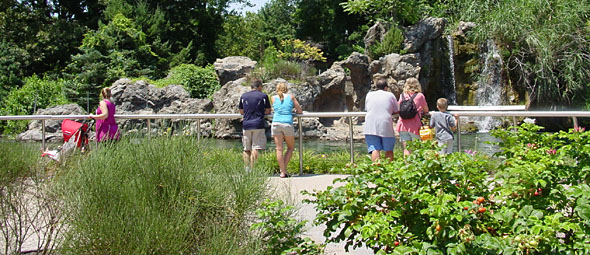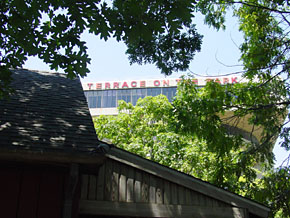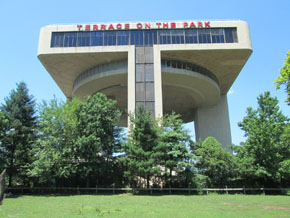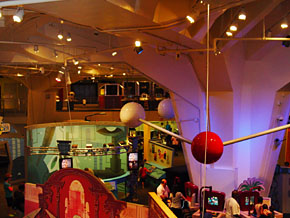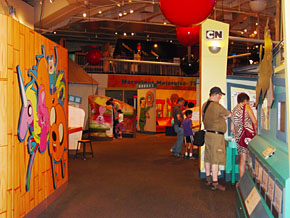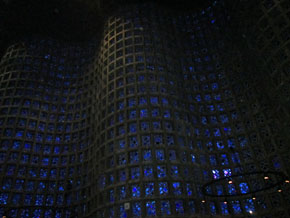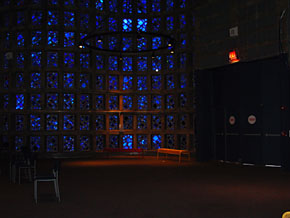|
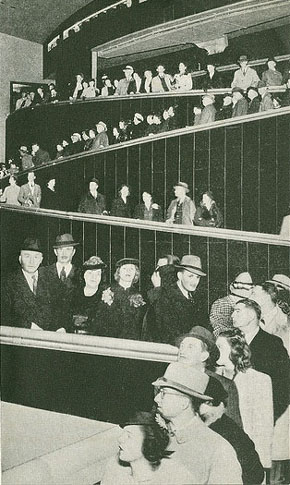 |
 |
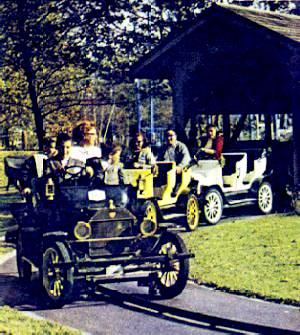
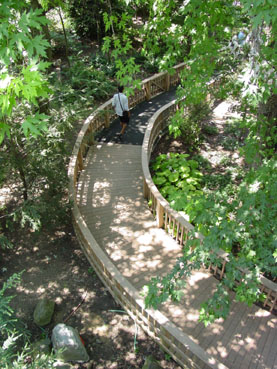
In 1964, visitors rode simulated antique cars along winding paths in this same location at the Avis Rent-A-Car pavilion. Left picture: News Colorfoto by Richard Lewis, New York Sunday News, July 11, 1965
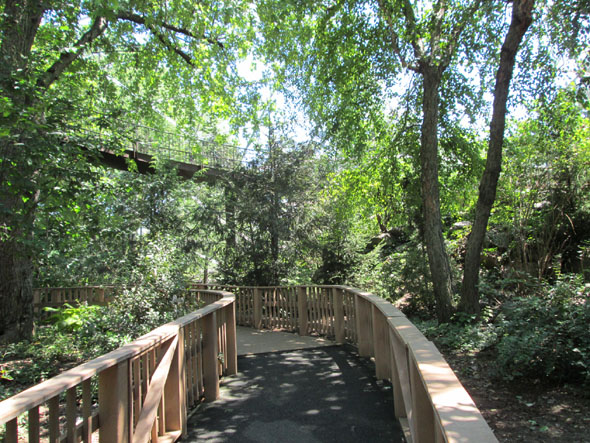
Now all you need to do is imagine yourself in one of those Avis cars while walking these wooded paths for another parallel experience.
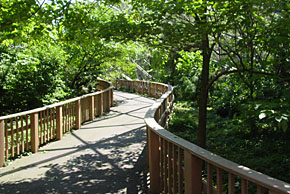
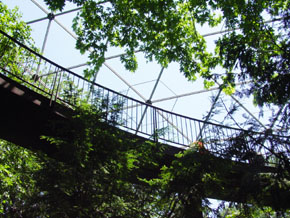
Here's more "Highways and Horizons" at the Queen's Zoo aviary.
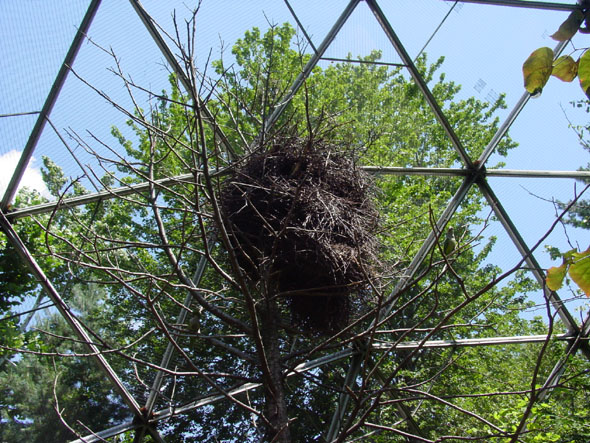
Now this is what happens when a world's fair pavilion is abandoned for 50 years. The birds take over! But that's just fine by nature lovers at the Queens Zoo.
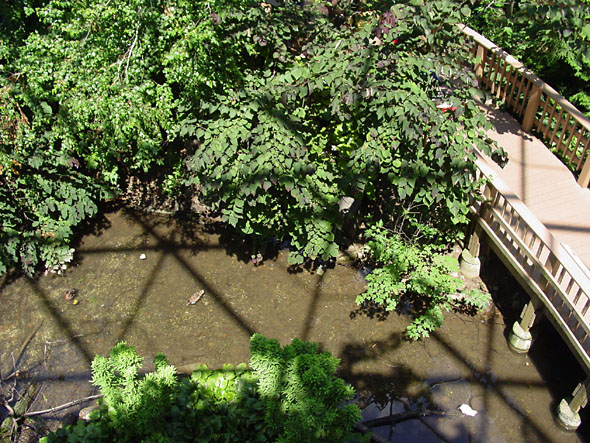
A flood on the pavilion floor? Remember, this was marsh land before the '39 fair. Or was this left over water from between the islands of the Chrystler Pavilion? Rather it is part of the beautiful nature habitat the Wildlife Conservation Society* has created for it's animals. (*Organization that runs the zoos throughout New York City)
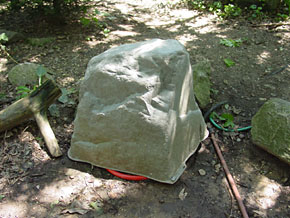
Not all rocks are what they seem to be.
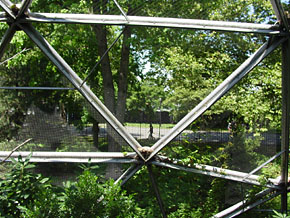
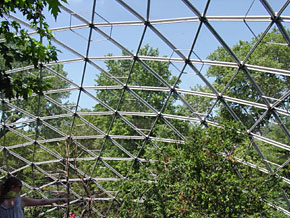
Looking out over a very transformed "Transportation Area." Looking this way in 1964 we would have seen the new Mustang car being introduced in front of the Ford Motor Co. Rotunda.
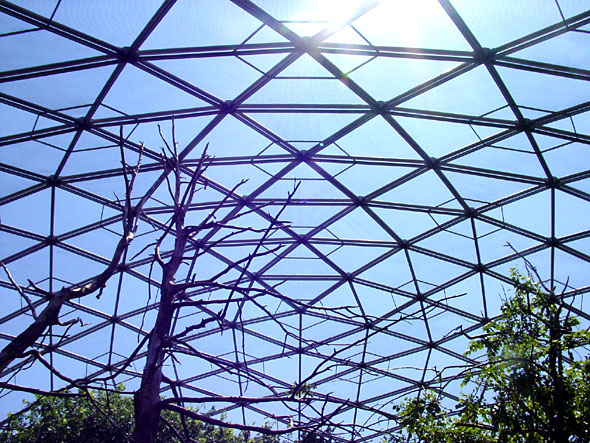
Lets take a closer look at the geodesic dome. While on our walking tour we looked up and noticed another World's Fair reminder. Only once in the top center of the dome there is the five sided shape of the Chrysler logo that was so prominent in the shape of the "Show-Go-Round" puppet theater pictured below. Look for it in the center of the above picture.
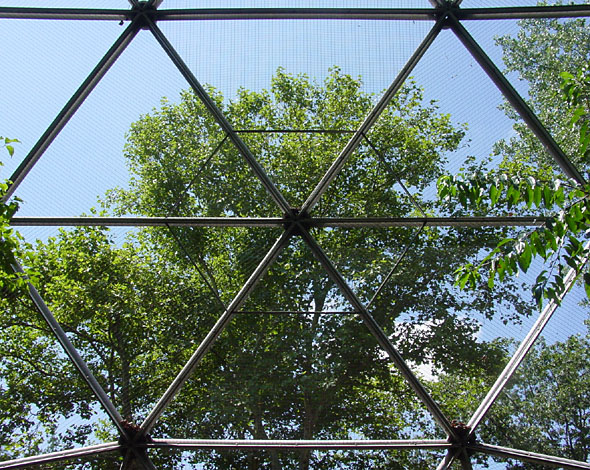
The spaces between the stainless steel support membrane were once solid panels to keep light out of the auditorium within, but birds like sunlight and fresh air, so sturdy screens were installed instead.
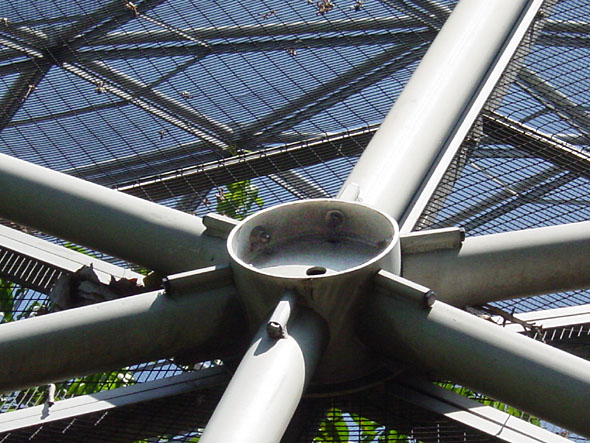
The individual pieces of the structure are fastened to hubs with hex nuts and bolts making assembly quick and easy on site. Looking at a shot (smaller picture below right) showing the original pavilion roof, it is clear from the shadows that the roof was a canvas like "tent" that was suspended on cables about a foot or more from each of the hubs. The center hole seen in the picture above accommodated the fastening of the cable. The picture below shows an installation with suspension cables and fitting in the center holes. The chain's anchor in the hole can be seen on the right side hub. More information on geodesic domes Also see Buckminster Fuller Institute
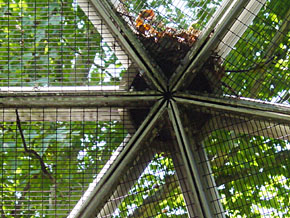
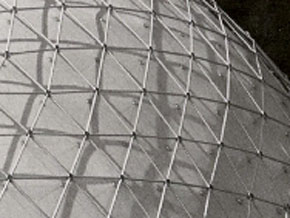
A view of the underside shows the screen frames that now take the place of the original roofing. It is unclear how the screen frames attach to the load bearing structure. (We'll add this information once we get an answer.) These frames had to be precisely made to fit the unequal dimensions of each space as each space was slightly different to accommodated the curvature of the sphere. Original engineering drawings would have been essential in prefabricating these new frames to size before anything was re-erected. Keep in mind that these frames were not a part of the structure at the fair. (Right) Section of Chruchill Pavilion roof showing tent suspended from geodesic dome.
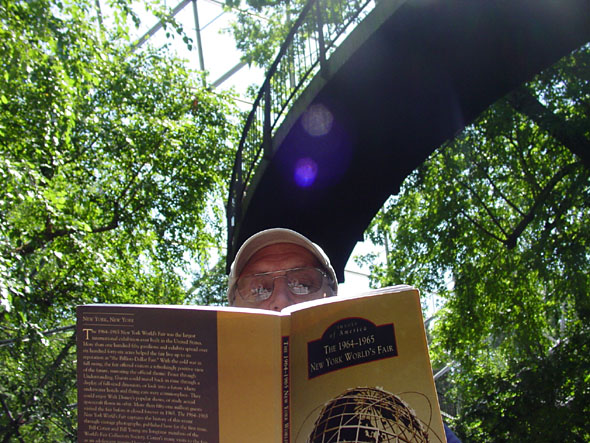
Before coming out from under the Churchill dome, Cary Miller takes a moment to read Bill Cotter's take on the pavilion in book, "The 1964-1965 New York World's Fair" available through Arcadia Press or HERE.
From automotive transportation to seal traffic.
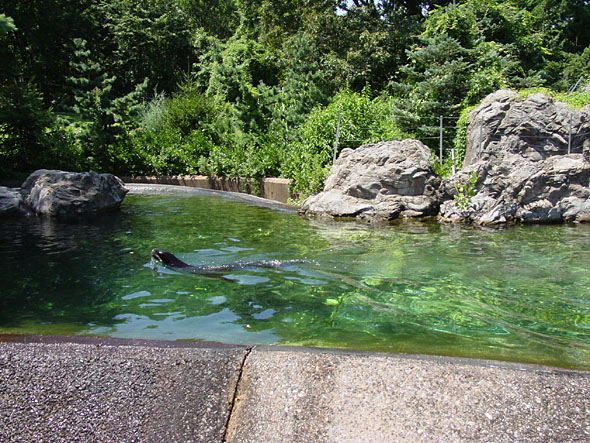
Instead of the latest model cars by Chrysler appearing to be floating on the water that surrounds several exhibit islands pictured below, seals frolic in beautiful habitats of foliage, rocks, and water.
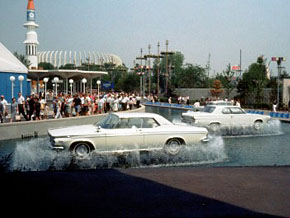
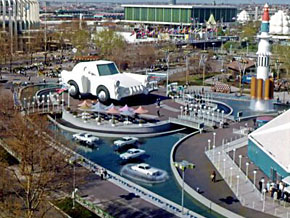
PHOTO: WorldsFairPhotos.com
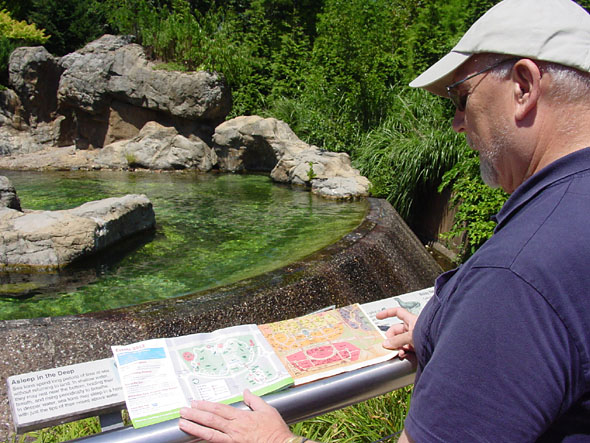
Gary compares the Queens Zoo map to the map of the World's Fair.
This is now the kingdom of wild animals.
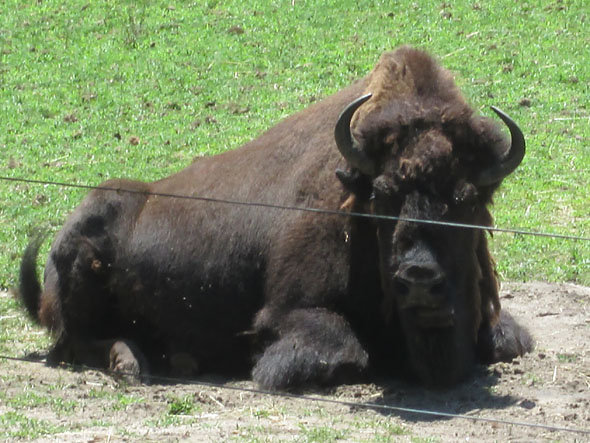
Is this a former Pinkerton guard still watching over the Transportation Area. Digging to find the underground home may be safer than digging here to find any remaining foundations from the Ford Pavilion that stood in this area during the 1939-40 fair. Perhaps the zoo would loan this guy to us on the restoration crew at the New York State Pavilion to scare off the graffiti vandals.
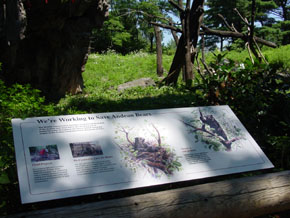
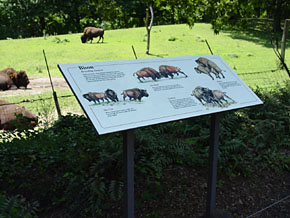
Just like the fair, the Queens Zoo is a great place to learn many amazing things.
The Greyhound parking lot was torn down to make a farm.
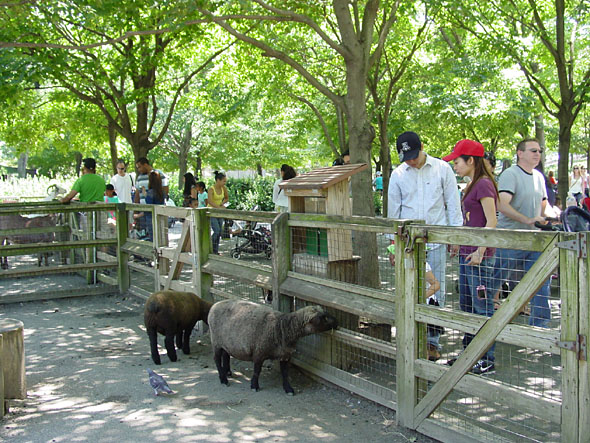
On the other side of the Avenue of Transportation is an extension to the zoo. Here a petting zoo of farm animals occupies the area where there was a Brass Rail fast food restaurant and the Greyhound bus parking area. Are these sheep catching the scent of hamburgers from the Brass Rail?
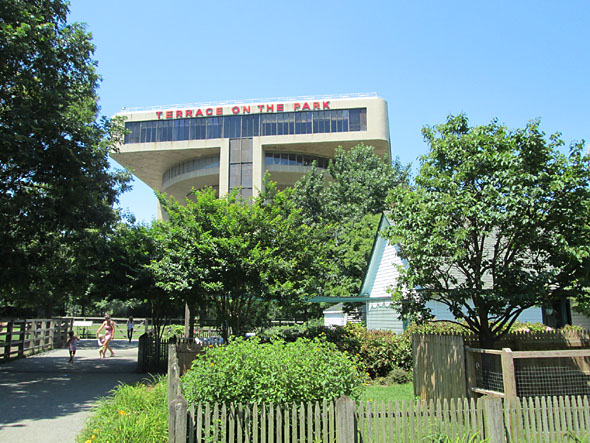
Inside the this petting zoo you would think you were at a farm in Virginia. That is until you look in this direction and are reminded that you are still at the site of the New York World's Fair. The Port Authority of New York and New Jersey Heliport, now the Terrace on the Park catering facility, looms over this peaceful country setting.
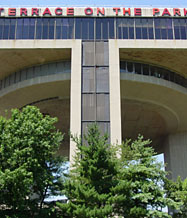
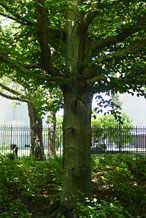
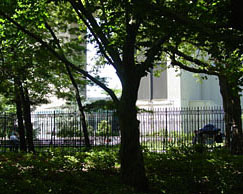
The heliport breaks the illusion in several points along the zoo's perimeter.
Revisiting Atomsville
Unlike the zoo where similarities to the World's Fair are subtle, that is not the case at the New York Hall of Science. Here it seems the World's Fair never ended.
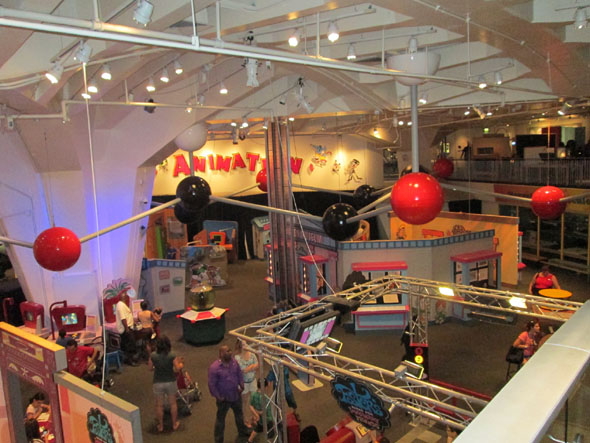
The Hall of Science was one of the great pavilions at the fair and it operates today much as it did then. During the fair this room featured many scientific exhibits including one called "Atomsville U.S.A." Atoms are still part of the display today. This picture shows the massive poured concrete center column and ceiling beams needed to support this huge pavilion. Unlike most other workd's fair structures, this one was built to last well after the fair as a permanent science museum. It was not completed until the second season of the fair.
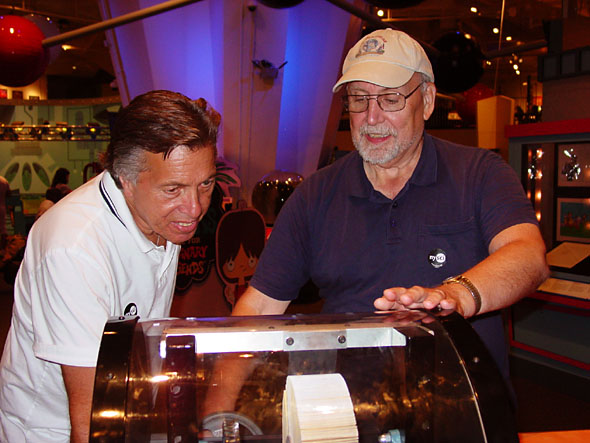
Two kids at heart, John Piro and Gary Miller relive the feeling of being at the World's Fair by operating this hands-on display which demonstrates how moving pictures are created by persistence of vision using flip cards.
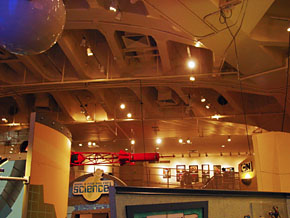
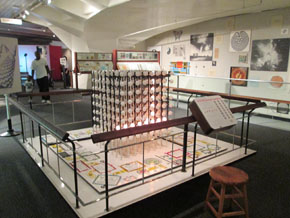
The first three pictures above show a traveling exhibit by the Cartoon Network. The bottom right picture is of a permanent exhibit presented by IBM about mathematical computations and theories of logic and probability. It's no coincidence that it is based largely on the IBM pavilion exhibit area at the IBM pavilion pictured below. Down to the graphics on the information panels the designer of this display knew it would be here at the site of the New York World's Fair where IBM once had a major attraction. The probability machine which was a part of the pavilion's exhibits is reproduced here in a scaled down version.
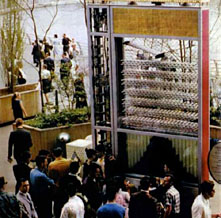
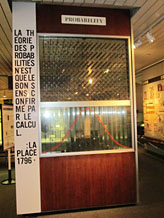
The mathematics exhibit features a smaller version of the the probability Machine, left, that was at the IMB Pavilion, right.
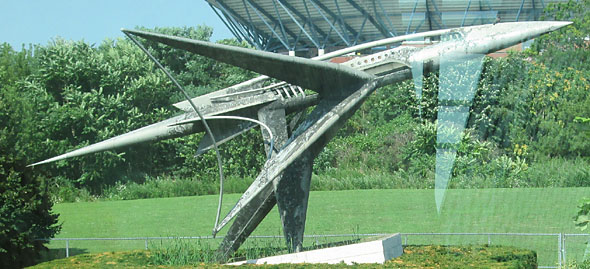
Looking out the windows of a new extension to the Hall of Science, this relic of the fair can be seen. It is the badly damaged rocket ship sculpture that was originally between the Sinclair Dinoland and the SKF pavilions at the fair. It was commissioned for the fair and is titled "Forms in Transit" by Theodore Roszak.
Step back in space and time to 1964
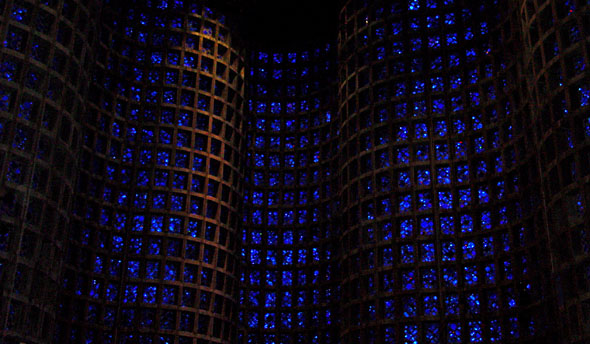
Stepping into the Great Hall at the New York Hall of Science is like a time machine journey back to 1965. Many who were at the World's Fair in its second season remember being in this same room and remember being awestruck by it sheer size and it's place at the dawn of the space-age. The hall was dark and the outside light filtered through the thousands of cobalt blue glass chunks set in the tall curving concrete walls. Today, one could easily imagine that the huge projection screen was still hanging on the far wall and was showing "Rendezvous in Space," a cartoon about space travel. Soon the film would end and the live action would begin several stories up on the ceiling. A simulated docking maneuver between a model of a space taxi and a space station gave great hope for an exciting future of technology and learning. (See the film HERE.)
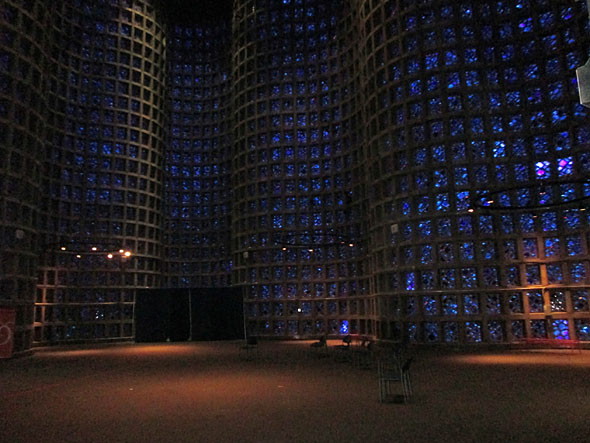
This vast space accommodated hundreds of fair-goers every half hour. After the docking demonstration, visitors walked down a ramp off to one side which lead them to the vast exhibit space in the basement level.
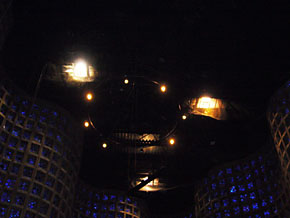
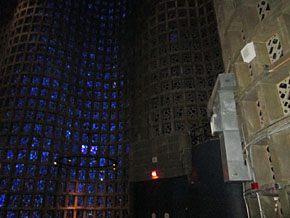
Temporary scaffolding, left, is seen at the ceiling for the renovation and restoration project that was underway. The projection booth was in the circular inclosure beyond the ventilation duct and to the right of the exit door.
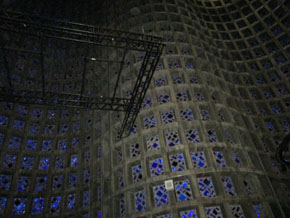
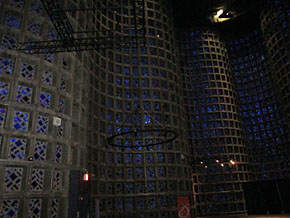
The suspended lighting fixtures were added recently by the museum. They use the hall for traveling exhibits and catered affairs.
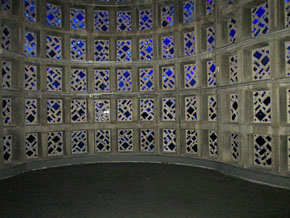
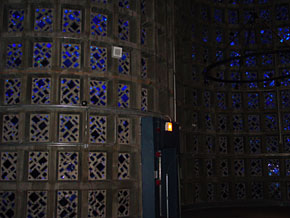 Over the years the museum had to add electrical conduit to the walls to accommodate fire safety systems and added outlets for exhibits. Much of the building is poured concrete and there was no easy run these wires inside walls and floors. Hopefully the these services can be provided in a more conceal way during the restoration project.
Over the years the museum had to add electrical conduit to the walls to accommodate fire safety systems and added outlets for exhibits. Much of the building is poured concrete and there was no easy run these wires inside walls and floors. Hopefully the these services can be provided in a more conceal way during the restoration project.
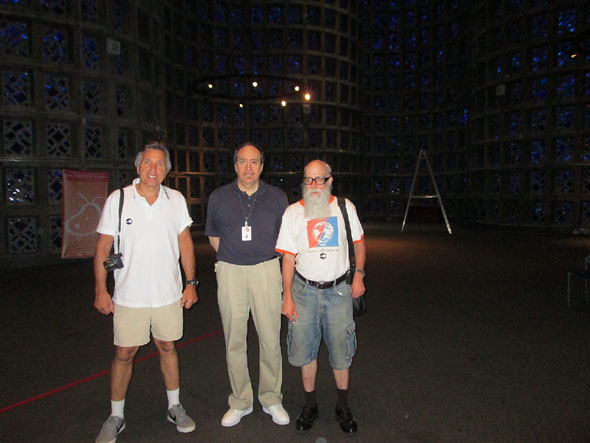
Thanks to Audio Visual Associate Monte Melnick, center, shown here with John Piro, left, and Jim Brown, right, for letting the group take a look at this amazing World's Fair legacy.
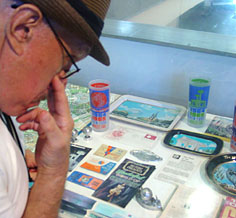
Jack Melnick has some of his World's Fair memorabilia on display in a case at the museum. Al Levy, a former greeter at the Dupont pavilion while as young man, gets emotional as he spots the brochure that he handed to guests as they entered to see "The Wonderful World of Chemistry."
A few relics of the World's Fair Space Park restored for a post space-age public
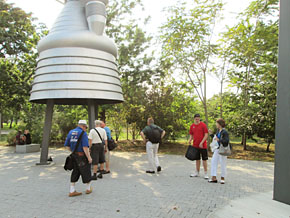
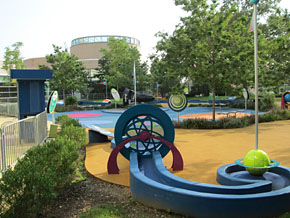
A much smaller "Space Park" replaces the comprehensive NAASA display that inspired hundreds of young minds at the dawn of the space-age. Only a few of the space vehicles have been restored and are on display and a couple small interpretive panels have been installed in the new park. A science education oriented minature gold course shares space beside the space park of today.
Read more about the Hall of Science at the World's Fair HERE at nywf64.com.
In conclusion
There are many parallels between the two New York world's fairs and the attractions here today at Flushing Meadows Corona Park. It could be said in a way, that we still have a world's fair of a sort here today — lots of crowds of people out for an enjoyable day, things to see and learn about, visitors and local residents of many nationalities and cultural backgrounds, and a huge breath-taking environment to marvel at.
All is not lost if the educational institutions that occupy the grounds of this once world of tomorrow continue to inspire young minds as the world's fairs of 1939-40 and 1964-65 inspired the generations that were lucky enough to have experienced them.
Join us on future tours, informal walks, lectures, and exhibits. Sign up for notifications at http://www.meetup.com/COME-BACK-TO-THE-FAIR and learn more about the 1964-65 New York World's Fair at http://www.nywf64.com and by searching on Google.com. For information on the 1939-40 fair see: http://www.1939nyworldsfair.com
CURRENT DAY PHOTOS BY JIM BROWN AND GARY MILLER. OTHERS FROM VARIOUS UNKNOWN SOURCES AND NYWF64.COM.
